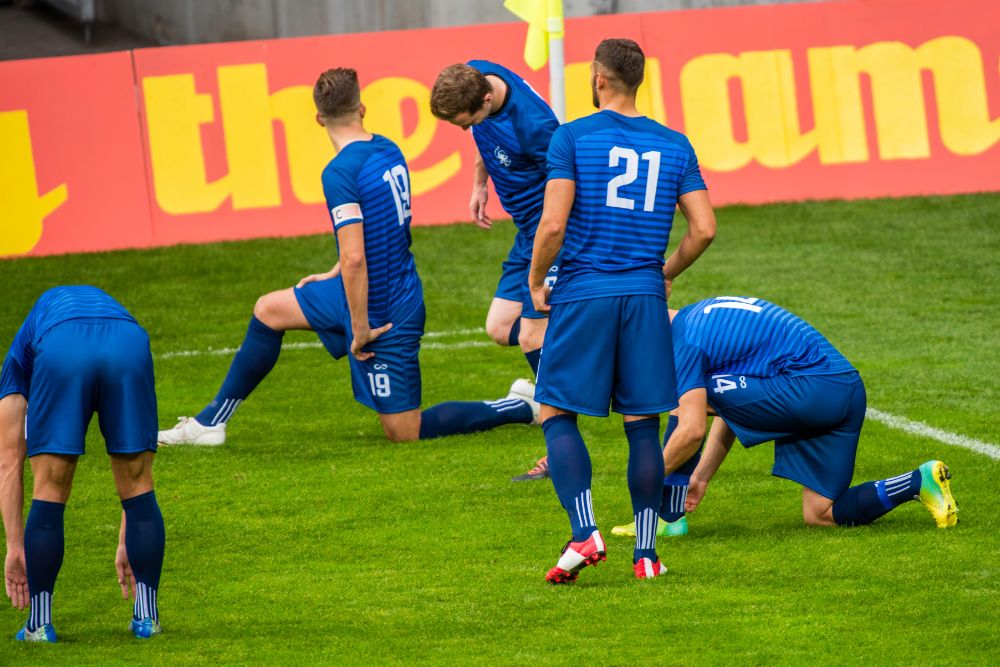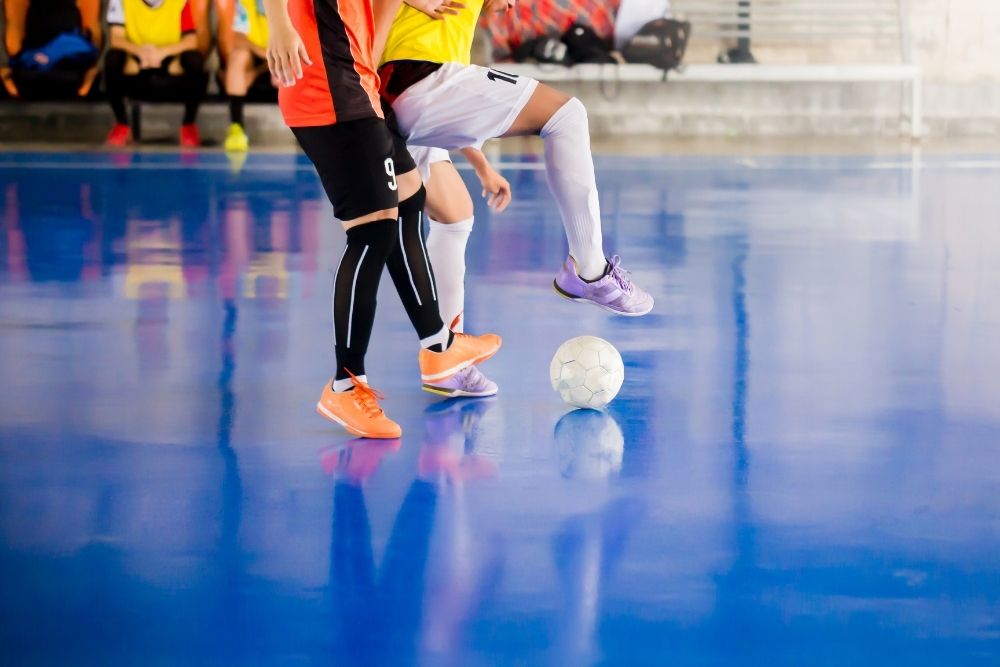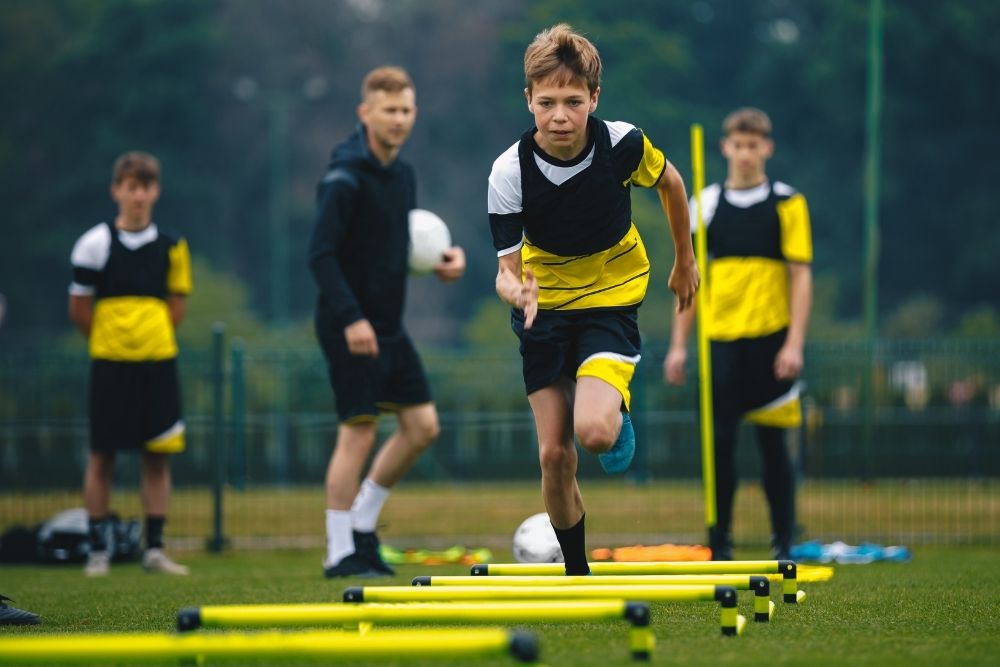Have you Ever Wondered… How Much Running Does a Soccer Player Do In Training?
It is no surprise, soccer players are required to run. It is a fundamental part of the game.
In a team vs team game, we see players running all the time. Whether it be running to get ahead of the opposition, to track back into a more favorable defensive position or even to create space to allow team players to press the attack.
The question I am asking you today however is. How much do they run during training, do they consciously train this part of their game? – better yet – do they even run at all?
While it may seem like a pretty obvious and clear-cut answer, the quantity of “running” during a training or practice session is determined by what it is the team is working on during that specific training session.

As an ex semi-professional soccer player, I have had the first-hand experience into what training sessions look like, let me tell you – we ran – we ran a lot but not in the way you would think.
You are not told to just head out onto the field and go, training routines are pre-planned in advance.
So what does one look like?
Quick Navigation
A typical training Session: What Does It Entail?
I will try to keep this section short.
On the morning of a training session, all players will be required to arrive an hour before to be briefed.
You will be inspected to ensure you have the full required training kit, depending on the clubs rules and how strict they are at enforcing you will either be given anything missing from your kit, or you will be dismissed and fined – that is not an exaggeration – some clubs DO fine players for not arriving with the correct attire.
With the inspections complete, you are briefed on the training regime for the day and who will be conducting it and any club news that should be given to the players.
Let’s hit the field.
How much do players run in training?
Every training session has elements of movement. Running, Sprinting, Walking, etc.

Almost all training sessions begin with a 15 – 20 minute session of “ keep ball ” and it is exactly how it sounds – try to keep the ball!
A group of players will form a circle and take it in turns to send up to 2-3 players into the center of the circle and the aim of the training drill is to stop the players in the center from getting the ball.
If a player in the center manages to intercept a pass or tackle a player on the outside of the circle, the player who gave the ball away replaces a player in the center of the circle.
During these small 15 – 20 minute sessions, these require a lot of short and quick bursts of pace. You are very rarely standing still.
It is not uncommon for a set of players to run an average of 9 km during these short drills as every single player is involved with some form of movement whether it be on or off the ball.
Shooting drills are common practice during training sessions and possibly where the least amount of running occurs.
The main purpose of these drills is to improve muscle memory. That is it. The drills are not to improve the power or speed of the shot.
They are simply put together to improve the mind-foot connection. Which allows you to get a shot off faster in a competitive game.
Players will normally split off into two teams and take it in turns to pass off a ball to a player or coach at the sidelines, and fire off a first time shot at goal.
The rest of the players that are waiting their turn will either be stretching or standing and having good old chitchat!
We could talk for hours about one particular training session, the fact of the matter is. A training session can have various drills involved.
Each drill will vary in intensity meaning more running will be required by an individual player. But one thing is for certain during the drills almost every drill requires short bursts of pace and acceleration.
It is not uncommon for a whole training session to cover over 9 MILES of the distance across a 60-minute training session.
PreGame Training
Yes, match day or pre-game training is a thing.
It is the section of a game that is usually involved before the game starts or better known here in the UK as “pre-match buildup” these kinds of mini sessions will very rarely if not ever have intense drills.
These focus more on warming players up before the game starts.

Here you will see players jogging and stretching and doing up and down runs just to get the muscles warm and ready to go when the match starts.
Players will run ALOT but nowhere near as intense as training sessions.
During my personal pre-game build up sessions, jogging from one side of the pitch to the other whilst performing stretches was common practice.
Considering the average width of a pitch here in the UK is 90m, you could begin to rack up a lot of mileage by simply warming up and jogging slowly.
What about other variants of soccer?
There are many varieties of soccer across the globe. The standard 11 vs 11 and touch football to name a few, the list is endless, however one of the most popular categories of soccer is futsal.
In case you’re wondering, futsal is a game of indoor soccer consisting of two teams. Each team has 5 players each and is played on a drastically reduced sized playing field or “court”, where there is an unlimited number of substitutes.

The ball is smaller and is a lot heavier than a standard game. Competitive games usually last around 20 minutes and a half consisting of high-intensity play where a player will have a major edge if they are more skillful and technically sound due to the demand for high-intensity play.
It is believed that while the game is shorter compared to the normal 11 vs 11, players will fatigue faster due to the high-intensity nature of the game and the fact there are obviously fewer players playing at any time. So how far do they run?
According to Barbero – Alvarez, a man who investigated the activity profile of a game of futsal using video-based systems, the distance covered in a single game was anywhere from 2139m to 4313m across both teams.
That is a significant difference from the 11vs11 game detailed above where a single player can run far greater than that.
With the shorter game time and the fact there are only 5 players per side with an unlimited substitution rule and a smaller size playing field, futsal players simply do not keep up with the distances covered by a standard 11 vs 11 game.
Players can be removed and replaced at any given time making it also impractical to judge how far an individual can run in any one game.
Conclusion
Whilst it’s insanely obvious soccer players run A LOT during match days, a lot of the work is covered behind the scenes.
Training drills require a lot from a player and vary with intensity. It is very common that the average player will run a lot during training sessions because it is here where intensity is so fast and so hard that it demands it from the average player.
Even during recovery times between training drills players will jog just to keep the blood moving around their bodies.
So how much do players run in training? The answer is A LOT with the average player running 9-10km in a single 60-minute session.
** DID YOU KNOW?**
The longest soccer match in recorded history was the showdown between English clubs Stockport County and Doncaster Rovers at Edgeley Park on March 30, 1946.
The duration of the match was a remarkable three hours and 23 minutes and the world record has stood for over half a century.
That means if the average player over a 90-minute game runs a distance of 9km, over the course of that particular game, that average player would have run over 18km!
** TRIVIA **
In the modern-day game of soccer who do you think holds the record for the most distance covered in a single football game? Leave your answers below
Hi there, I’m Jay.
Soccer is everything in my life! My friends and I have created this blog with all our enthusiasm, passion, and understanding after years of playing pro soccer. Hope you will enjoy it!
